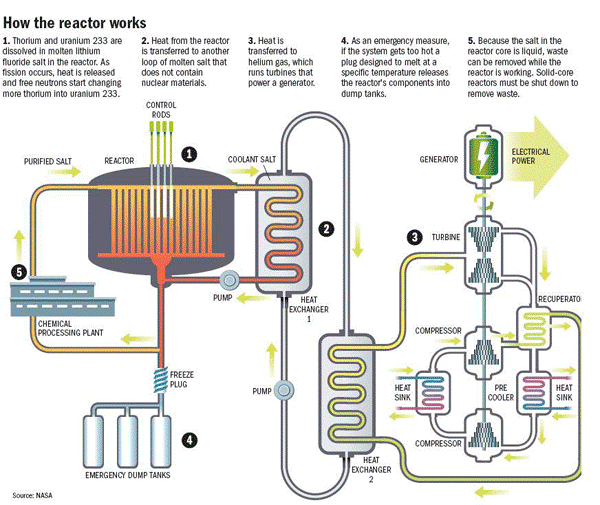A New Hope for the Future of Nuclear Energy[]
By: Tao Steven Zheng (郑涛)
Nuclear energy production in the 21st century has experienced a cold start. After the Fukushima Daiichi disaster of March 2011, confidence in nuclear energy slipped from an all-time high to a new low. Several European countries have turned away from nuclear energy, with France being the exception. However, as of 2016, there is a renewed interest of nuclear energy in developing countries across the globe. These industrializing economies have expressed greater optimism about acquiring more nuclear power plants.
Whenever the words nuclear or atomic appear in news headlines, images of critical danger, radioactive pollution, and post-war panic are conjured in the minds of the general public. This irrational fear of nuclear science and technology has its roots planted since the end of World War II. Nevertheless, millions of people worldwide rely on energy generated from nuclear power plants, and medical radioactive isotopes have been successful in destroying malignant cancer cells that were virtually untreatable just half a century ago. Nuclear energy is shown to be less environmentally detrimental compared to fossil fuels. In truth, nuclear power plants are also statistically less likely to collapse compared to coal power plants. Many governments of both developed and developing economies are funding more research into nuclear energy production and nuclear safety. The nuclear energy industry is undergoing more investigation, development, and innovation than most conventional power generation methods. Perhaps it is time for the general public to understand and reconcile with what nuclear science and nuclear energy is capable of providing in the near future.
Generation IV: The Nuclear Revolution[]
In the 21st century, the next generation of nuclear reactors will be designed under a new regime. Generation IV (GEN-IV) is the next step towards commercial fission power plants. All GEN-IV nuclear reactors are to meet four overarching goals: efficiency, economy, sustainability, and safety. Unlike its predecessors, there is greater emphasis on the development of sustainability and safety. What is meant by sustainability and safety is the mitigation of ecological damage, and the prevention of nuclear arms proliferation. Therefore, GEN-IV nuclear reactors are purposefully designed with objectives that move away from the austere and potentially destructive mentality of the Cold War.
GEN-IV Molten Salt Reactors[]
Although research into the design and feasibility of molten salt reactors began in the 1950s at Oak Ridge National Laboratories, development slowed from 1970 to 1990. Interest in what was then an expensive experimental reactor waned due to the rise of commercial light water reactors. This delayed further progress of testing molten salt reactors until the 21st century. Most conventional nuclear power plants use water as the primary source of cooling and heat transport. However, the molten salt reactors utilise liquefied fluoride salts that function as fuel and coolant, which was known to cause corrosion in alloys. Efforts in designing alloys more suitable for molten salts, as well as corrosion protection methods have been successful in recent years.
Current research into molten salt reactor technology aims to replace conventional uranium fuel cycles with the thorium fuel cycle. Fuel salts are mainly fluoride salts infused with thorium-232. Thorium-232 is a fertile material, not a fissile material. This means thorium-232 does not split into two atoms, release energy, and immediately start a fission chain reaction when hit by a proton. Instead, thorium-232 will absorb the proton via a process called neutron capture, and transmute into thorium-233. As thorium is at least three times more abundant than uranium in the Earth’s crust, the economic advantages make it a strong contender for nuclear energy in the future. The thorium fuel cycle does not produce dangerous fissile atoms such as neptunium and plutonium. These fissile atoms are also known as transuranic atoms. Transuranic atoms have long half-lives and are used in the production of nuclear armaments. This reduction in harmful nuclear waste and by-products is more desirable under the GEN-IV regime.
Advantages of GEN-IV Molten Salt Reactors[]
Efficiency and Economy
- Molten salts are great for absorbing and transporting heat
- Molten salt reactors reach very high temperatures for high efficiency conversion cycles
- Do not require huge quantities of water as a means of cooling
- Molten salt reactors do not require expensive fuel rods used in conventional nuclear power plants
- Thorium is more abundant resource in the Earth’s crust compared to Uranium
Sustainability and Safety
- The thorium fuel cycle produces atoms with shorter half-lives
- The waste material and by-products are not suitable for making nuclear weapons
- The core of the reactor is chemically inert, which prevents explosions and toxic releases
- In case of an emergency, the molten salt can be safely contained in emergency dump tanks
Disadvantages of GEN-IV Molten Salt Reactors[]
- Risk of corrosion in the reactor from long term use of molten salts
- Requires an on-site chemical processing plant to treat and replenish the molten salts
- The thorium fuel cycle is harder to initiate chain reactions compared to the uranium fuel cycle
Progress in GEN-IV molten salt reactor technology[]
Molten salt reactor technology has matured considerably in the past ten years. With several countries participating in this international consortium of nuclear energy research, molten salt reactors are being developed in Asia, Europe, and North America.
Who are the major players in developing GEN-IV molten salt reactors?
Developing economies with large populations such as India and China are expressing great interest in constructing molten salt reactors in the near future. This is due in part to the abundance of thorium deposits compared to uranium. India in particular is likely to possess one-sixth of the world’s thorium supply. China is a leading contributor to the research and development of molten salt reactors. This developing economy is finding efficient ways to generate more electricity for its rapidly growing urban population, as well as reducing its reliance on extremely polluting coal power plants.
Current testing demonstrate that the benefits of GEN-IV molten salt reactors outweigh the potential hazards. If progress and support continues at the current pace, we will likely see several GEN-IV molten salt reactors built between 2020 and 2030. Once commercially available, the molten salt reactor will be a promising design for producing cleaner, safer, and cheaper energy.






